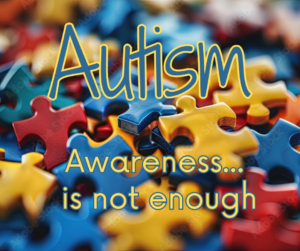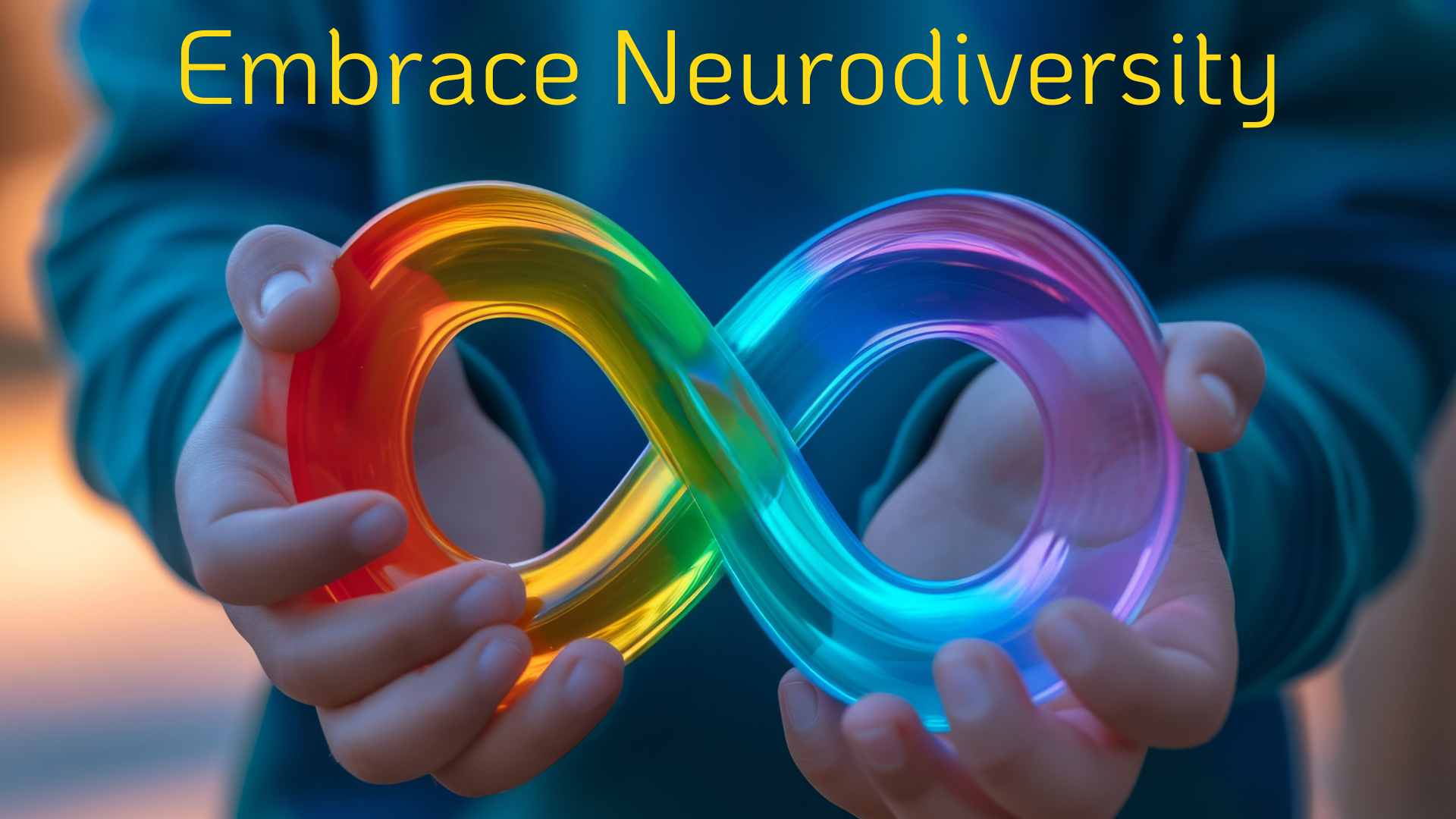April is Autism Acceptance Month. On the positive side, the month prompts a lot of discussion around autism, bringing much-needed attention to neurodiversity. I can’t help but be frustrated though, by the fact that we are still devoting the month to awareness, rather than a month of celebrating Autism.
Amid the dialogue around autism, there exists a crucial distinction between two concepts: autism awareness and autism acceptance. While these terms may seem similar, they carry distinct meanings and implications for those on the autism spectrum.
Autism Awareness

Autism awareness campaigns have played a pivotal role in bringing attention to autism spectrum disorder (ASD). The goal of these initiatives is to increase public knowledge and understanding of autism, often focusing on the characteristics and challenges associated with the condition. Through awareness efforts, many people have gained a basic understanding of autism, including its prevalence, symptoms, and potential impact on individuals and their families.
Simply knowing that autism exists, however, does not necessarily translate into meaningful support or acceptance for those on the Spectrum. In fact, awareness often perpetuates a narrative of deficit focusing on causes or treatments, framing autism as a problem to be solved or a burden to be borne.
Autism Acceptance
On the other hand, autism acceptance goes beyond mere awareness. Acceptance shifts the narrative towards one of celebration and accommodation rather than focusing solely on deficits or challenges. It emphasizes the strengths, talents, and unique perspectives that people on the spectrum bring to the table.
Acceptance embraces neurodiversity and recognizes the value of autistic individuals as integral members of society. It promotes the idea that differences in communication, behavior, and sensory processing associated with autism are natural variations of the human experience, deserving of respect and accommodation. This perspective challenges the notion of a neurotypical “norm” and advocates for creating environments that accommodate diverse ways of thinking and being. It involves promoting inclusion, advocating for equal opportunities, and fostering a culture of respect and understanding. When society embraces autism acceptance, it becomes more compassionate, supportive, and accessible for autistic individuals to thrive.

Both Are Needed
While awareness and acceptance are distinct concepts, they are not mutually exclusive. In fact, they complement each other in creating a more informed and inclusive society. Awareness lays the groundwork by providing essential knowledge and understanding, while acceptance builds upon this foundation by promoting empathy, advocacy, and meaningful action.
Autism awareness is an important first step, but true progress lies in fostering autism acceptance. By embracing neurodiversity, promoting inclusion, and advocating for meaningful change, we can create a more inclusive and supportive society where sensory rooms are the norm, where signs in public spaces include not just text, but visuals as well, and where my students and their families feel like they belong in those public spaces.
This April, let’s not just wear blue for Autism Awareness. Let’s include the neurodiverse in the conversation, educate and raise awareness, advocate for inclusive policies and practices, and challenge stereotypes and stigma. Let’s celebrate neurodiversity. Because autism is beautiful.


